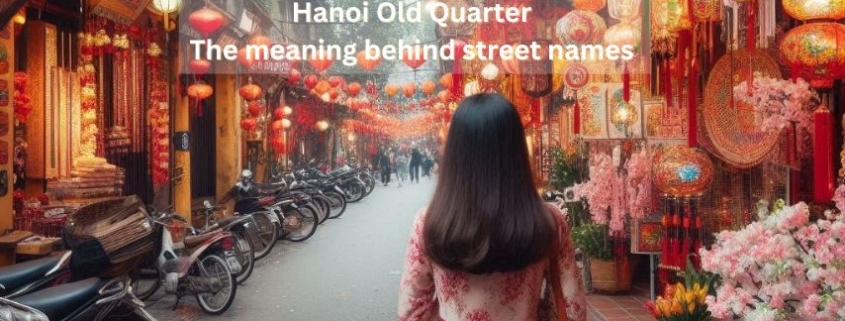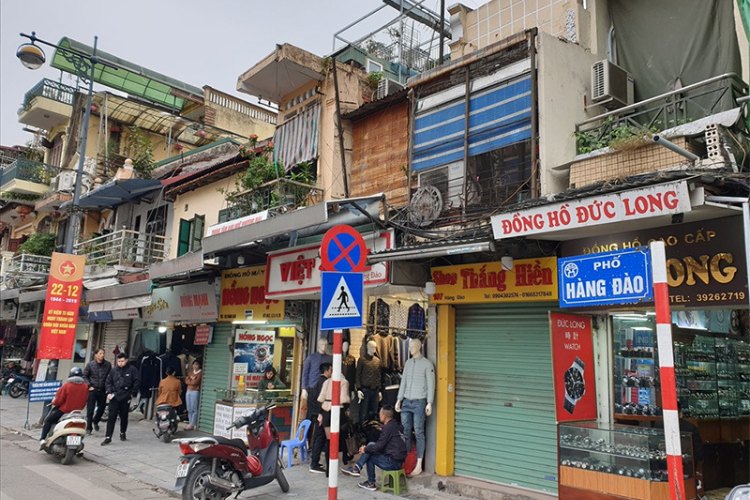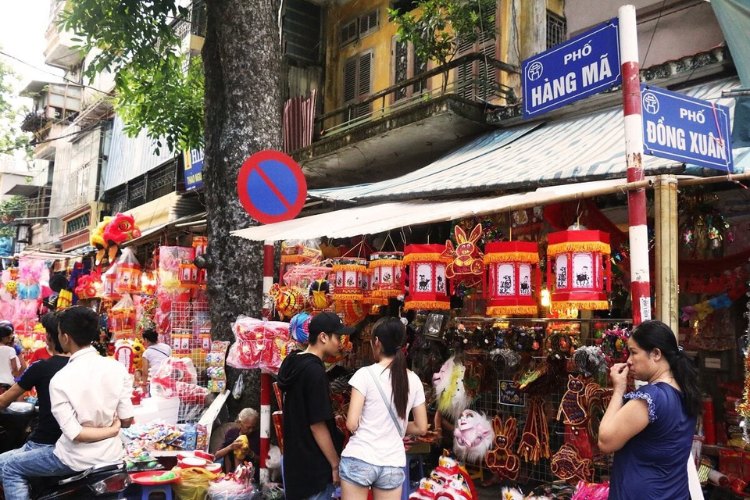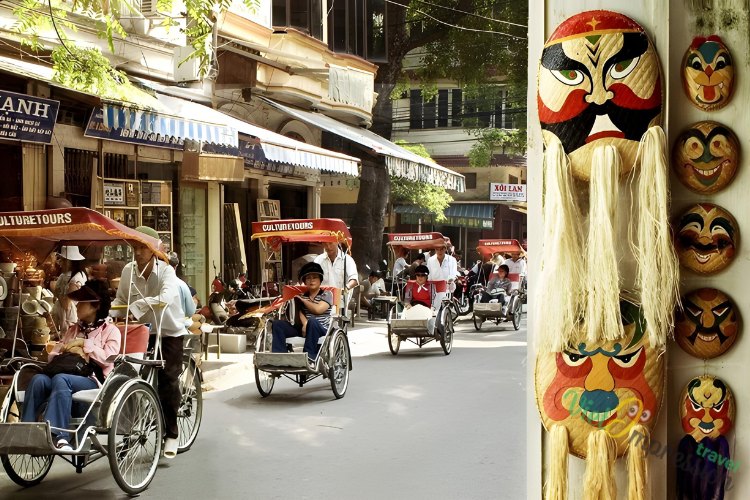Meaning behinds the streets’s name in the Old Quarter Hanoi
HANOI OLD QUARTER: THE MEANING BEHIND THE NAMES OF STREETS
Hanoi’s Old Quarter, known as “Phố Cổ Hà Nội,” is an intricate network of 36 streets. This area is a living museum of the bustling street, is a living museum of the city’s rich history, vibrant culture and enduring traditions. Each street has its own story, often named after the goods traditionally sold there, offering a fascinating glimpse into the past. This started from the 11th century when artisans and merchants from surrounding villages established guilds in the capital.
The Meaning behinds the street names in Hanoi Old Quarter
The name “Old Quarter” reflects the area’s long-standing heritage, dating back over a thousand years. The district’s layout and architecture have remained remarkably unchanged, preserving the charm of its narrow streets, ancient houses, and French colonial buildings. Originally, each street was dedicated to a specific trade of craft. This unique naming convention gives the Old Quarter its distinctive character and historical significance.
For instance, Hàng Bạc Street was known for its silver stores, Hàng Gai for silk products, and Hàng Đào for fabrics. These names not only denote the types of goods once sold but also tell tales of the past commercial life that has thrived here for centuries.
Detailed Look at Specific Streets and Their Historical Significance
1. Hàng Bạc (Silver Street)
o Meaning: “Hàng” means “merchandise” or “goods,” and “Bạc” means “silver.” This street was known for its silver shops where artisans crafted and sold silver jewelry and items.
o Today: It remains a hub for jewelry stores, particularly those specializing in silver.
2. Hàng Gai (Silk Street)
o Meaning: “Gai” refers to the plants used for making hemp and silk. This street was renowned for its silk trading, particularly high-quality silks.
o Today: It is still famous for silk products, including clothes and traditional Vietnamese dresses (áo dài).
3. Hàng Đào (Peach Street)
o Meaning: “Đào” in the old Vietnamese language means “fabric” and the street was originally known for selling peach wood products. Later, it became famous for trading silk and dyed fabrics.
o Today: It continues to be a prime destination for buying fabrics and traditional Vietnamese garments.
4. Hàng Bồ (Bamboo Basket Street)
o Meaning: “Bồ” means “bamboo basket.” This street specialized in selling bamboo and rattan baskets and other household items.
o Today: The trade of bamboo products has diminished, but you can still find some traditional craft stores.
5. Hàng Thiếc (Tin Street)
o Meaning: “Thiếc” means “tin.” This street was home to tinsmiths who made and sold tin products, such as utensils and household tools.
o Today: Some tinware shops remain, though the street has diversified with various businesses.
6. Hàng Mã (Paper Offering Street)
o Meaning: “Mã” means “joss paper” or “paper votive offerings.” This street was known for selling paper products used in traditional spiritual ceremonies.
o Today: It remains a colorful street where you can find paper votive offerings and decorations, especially during festivals.
7. Hàng Tre (Bamboo Street)
o Meaning: “Tre” means “bamboo.” This street was lined with shops selling bamboo products, a versatile material in Vietnamese culture.
o Today: While less prominent, you can still find stores selling bamboo goods.
8. Hàng Chiếu (Mat Street)
o Meaning: “Chiếu” means “mat.” This street specialized in selling straw mats used for sleeping and sitting.
o Today: The street still has shops selling traditional mats, along with other goods.
9. Hàng Đường (Sugar Street)
o Meaning: “Đường” means “sugar.” This street was famous for its sweet shops selling various types of sugar and sweet treats.
o Today: You can still find stores selling traditional Vietnamese sweets and candies.
10. Hàng Than (Charcoal Street)
o Meaning: “Than” means “charcoal.” This street was where charcoal, a crucial cooking and heating resource, was sold.
o Today: The sale of charcoal has decreased, but some traditional stores remain.
11. Hàng Quạt (Fan Street)
o Meaning: “Quạt” means “fan.” This street was known for its hand-crafted fans, an essential item for coping with the tropical heat.
o Today: Traditional fan shops exist alongside a variety of other businesses.
12. Hàng Mắm (Fish Sauce Street)
o Meaning: “Mắm” means “fish sauce.” This street was specialized in selling different varieties of fish sauce, a staple in Vietnamese cooking.
o Today: You can still find shops selling fish sauce and other traditional Vietnamese condiments.
Hanoi Old Quater: Historical and Cultural Significance
Throughout its storied past, the Old Quarter has witnessed the rise and fall of dynasties from the Ly dynasty in the 11th century to colonial occupation, and its period of rapid urbanization. Despite these changes, its labyrinthine streets and well-preserved architecture offer a glimpse into the city’s rich heritage, showcasing a blend of indigenous Vietnamese, Chinese and French influence.
Each corner of the Old Quarter tells a story of bygone eras, with ancient temples, pagodas, and communal houses serving as cultural landmarks steeped in tradition. The layout of the district, characterized by narrow alleyways and artisan guilds, reflects its historical role as a center for craftsmanship and trade.
Over the centuries, the Old Quarter has evolved into a vibrant cultural center, where age-old traditions coexist with modern day life. Visitors can immerse themselves in the sights, sounds, and flavors of Vietnam, Exploring bustling markets, sampling street food delicacies and engaging with local artisans practicing traditional crafts.
In essence, Hanoi’s Old Quarter is more than just a collection of historic buildings – it is a living testament to the city’s enduring spirit and resilience. Its ability to adapt and thrive amidst changing time while preserving its cultural heritage makes it a truly remarkable destination. The Old Quarter deserves of its status as a living museum, even from its streets names and how locals there live generation to generation.
Exploring Hanoi Old Quarter
A stroll through Hanoi’s Old Quarter is a journey through time. Visitors can immerse themselves in the rich tapestry of history, culture, and tradition that defines this remarkable district. From bustling markets and traditional shops to ancient temples and French colonial architecture, the Old Quarter offers a unique and unforgettable experience.
Plan your visit to explore these historic streets and discover the stories behind their names, each offering a unique window into Hanoi’s enduring legacy.







